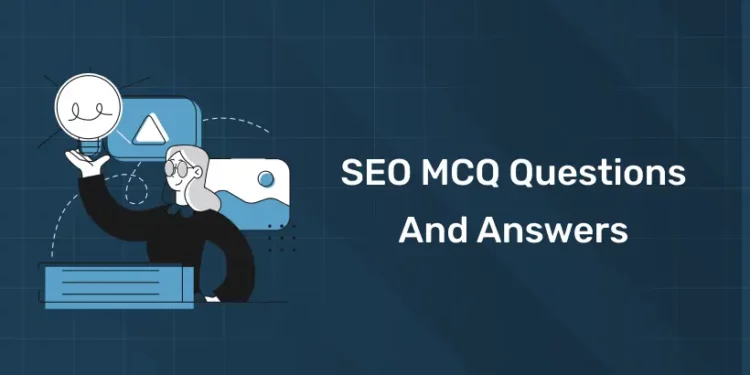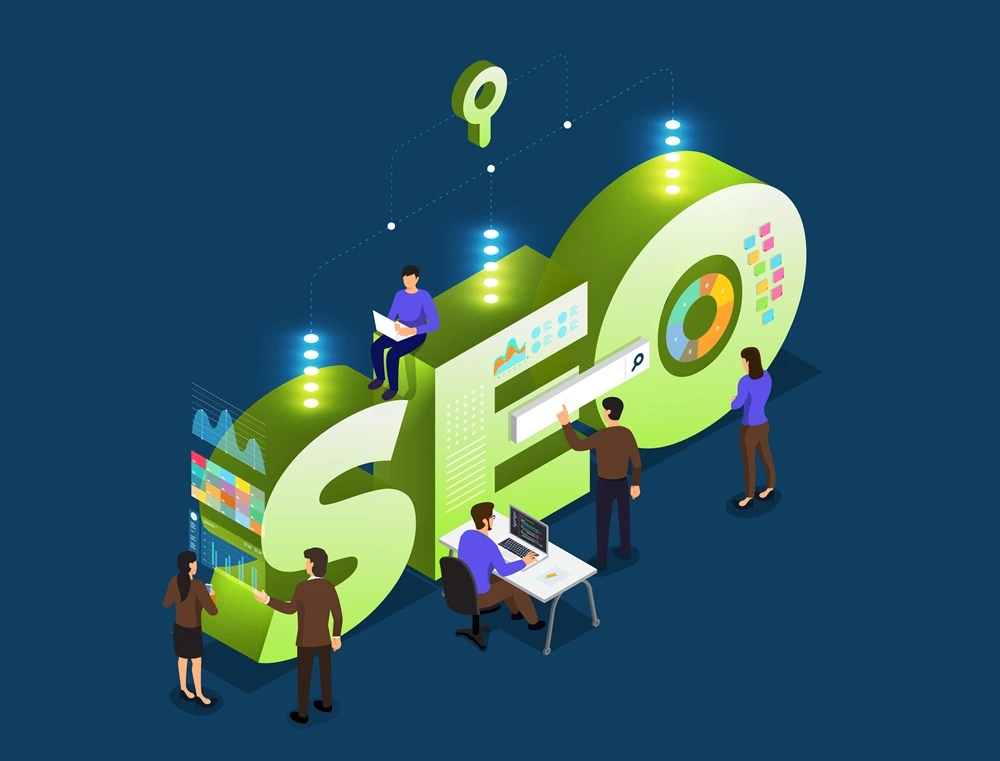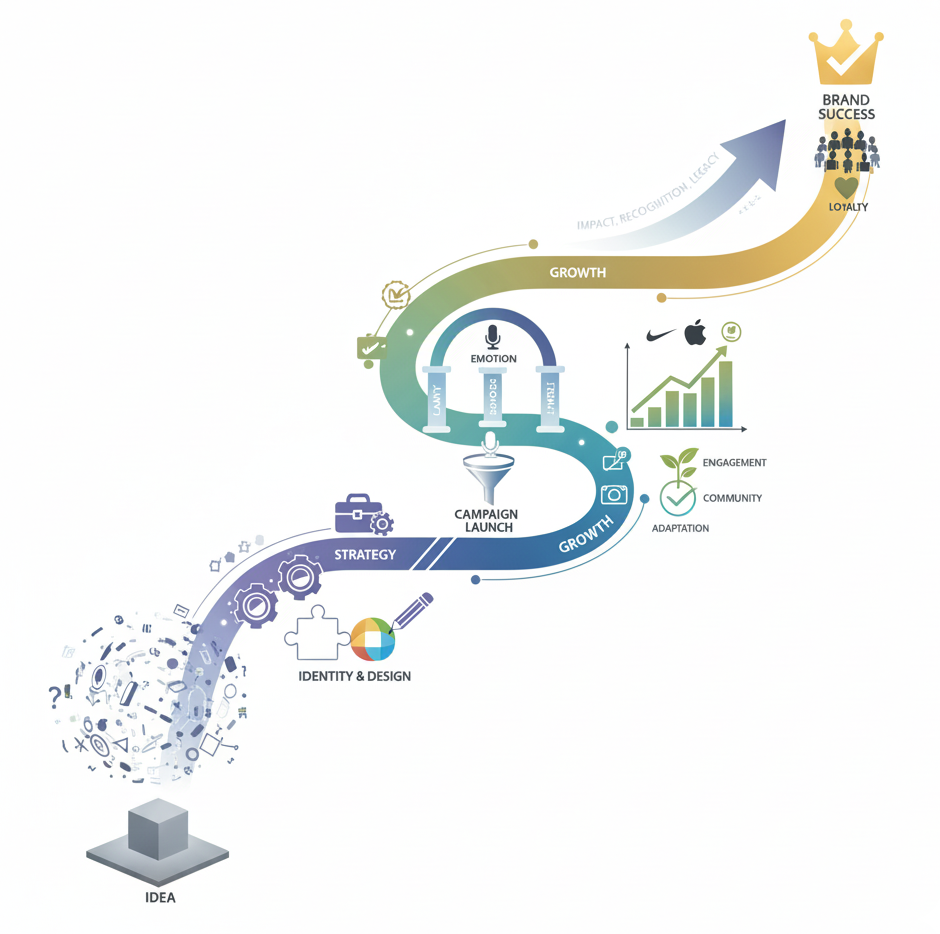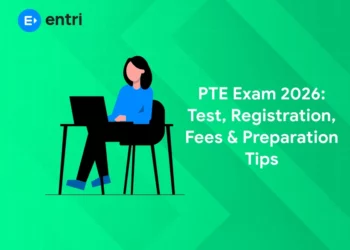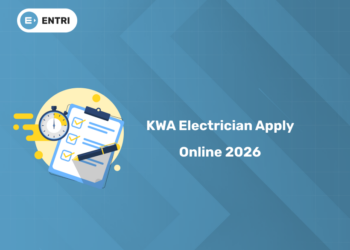Table of Contents
Search Engine Optimization (SEO) is a important skill for anyone looking to boost a website’s visibility and drive the organic traffic. Whether you’re preparing for an interview, enhancing your SEO knowledge, or simply testing your skills, the SEO MCQ are an excellent way to assess your understanding of the key SEO concepts. In this blog, we have compiled some SEO MCQ with the best answers, covering everything from the on-page optimization to the technical SEO and the analytics. These questions will help you to sharpen your skills and gain the confidence in your SEO expertise.
Learn Digital Marketing Fundamentals! Get Free Demo Here!
Introduction
Search Engine Optimization, or SEO for short, is the process of improving your website’s or Web pages’ ranking in search engine results pages (SERPs). A key element of digital marketing is search engine optimization, which raises a website’s exposure on search engines like Google. For any level of digital marketer, from novice to expert, optimizing website content, raising search engine ranks, and increasing organic traffic all depend on having a firm grasp of SEO principles.
Basic SEO MCQ Questions and Answers
1: What is the primary goal of SEO (Search Engine Optimization)?
1. Which of the following is the best description of the SEO?
a) A method of sponsored promotion that increases website traffic
b) A method for creating aesthetically pleasing webpages
c) A technique to raise a website’s position in search engine results
d) A technique to improve the security of websites
Answer: c) A technique to raise a website’s position in search engine results
Explanation: Search engine optimization, or SEO, is the act of making changes to a website to improve its ranking in search engine results pages (SERPs).
2. Which of the following influences a page’s ranking in search engine results the most?
a) The count of backlinks to the website
b) The website’s domain age
c) The quality of the website’s content
d) The number of social media shares it obtains are all factors to consider.
Answer: c) The quality of the website’s content.
Explanation: The quality and relevancy of a website’s content are the most crucial factors for ranking in search engine results pages, even though backlinks, domain age, and social media shares can all be helpful in SEO.
3. Which of the following is a black hat SEO technique?
a) Producing interesting, high-quality content
b) Stuffing keywords into content
c) Search engine optimizing photos and videos
d) Establishing a powerful social media presence
Answer: b) Stuffing keywords into content
Explanation: Stuffing a webpage with too many terms in an effort to manipulate search engine rankings is known as keyword stuffing. It’s regarded as a black hat SEO tactic and might get you in trouble with search engines.
4. Which of the following is the on-pageSEO factor?
a) A website’s backlink count
b) The website’s loading speed
c) The quality of the website’s content
d) social media following are all important factors to consider.
Answer: c) The quality of the website’s content.
Explanation: On-page SEO elements are those found on the website itself, like the content’s relevancy and quality, keyword usage, and website architecture.
5. Which of the following below is an off-page SEO factor?
a) The loading speed of the website
b) The quality of the website’s content
c) The number of website’s backlink
d) The header tags uses to the website
Answer: c) The number of website’s backlink
Explanation: The quantity and caliber of backlinks pointing to the website, social media presence, and online reputation are examples of off-page SEO elements.
6. The best way to optimize the images for SEO?
a) Usage of small image file sizes to decrease the loading times
b) Uses the descriptive filenames for the images
c) Usage of alt tags to describe the content of the image
d) All of the above three
Answer: d) All of the above three
Explanation: Use alt tags that appropriately explain the image’s content, descriptive filenames, and modest file sizes when optimizing photos for search engines.
7. The best way to optimize the videos for SEO?
a) Usage of descriptive filenames for the videos
b) Include the keywords in video title
c) Usage of the closed captions to increase the accessibility and the keyword density
d) All of the above three
Answer: d) All of the above three
Explanation: Using closed captions to improve accessibility and keyword density, descriptive filenames, and keyword density in the video title and description are all crucial for optimizing videos for search engine optimization.
8. Which of the following below is the best method to optimize a website for the local search?
a) Add business’s physical address and the phone number on the website
b) Use the keyword of location-specific on the website’s content
c) Add Google My Business profile
d) All of the above three
Answer: d) All of the above three
Explanation: Including the physical address and phone number of the company on the website, including location-specific keywords in the content, and setting up a Google My Business profile are all crucial for optimizing a website for local search.
9. What do you meant by a sitemap?
a) A list of every page of a website, in one file
b) A map indicating a business’s location
c) An illustration of the structure and style of a website
d) A file that details the backlinks pointing to a website
Answer: a) A list of every page of a website, in one file
Explanation: A sitemap is a file that contains a list of every page on a website together with details on its structure and organization.
10. The best way to improve website loading speed, from the below?
a) Optimize the videos and images for faster loading times
b) Minimize the uses of third-party scripts and the plugins
c) Usage of a content delivery network (CDN)
d) All of the above three
Answer: d) All of the above three
Explanation: Reducing the usage of plugins and third-party scripts, using a content delivery network (CDN), and optimizing images and videos for quicker loading times are all crucial steps in improving the speed at which websites load.
11. Which of the following is the suitable description of a keyword?
a) A term that pops up a lot on a webpage
b) A term that adequately characterizes a website’s content
c) A term utilized in marketing campaigns
d) A term with a lot of social media traction
Answer: b) A term that adequately characterizes a website’s content
Explanation: A keyword is a term or phrase that is used to increase search engine rankings and accurately defines the content of a website.
12. What is the uses of a meta description?
a) To give a succinct rundown of the information on the website
b) To increase the pace at which the webpage loads
b) To incorporate keywords that raise one’s position in search results
d) To include a link to the social media pages of the website
Answer: a) To give a succinct rundown of the information on the website
Explanation: A meta description is a succinct synopsis of a webpage that shows up in search engine results pages (SERPs). It is crucial for raising click-through rates and giving visitors a clear understanding of the webpage’s information.
13. What is a white hat SEO technique?
a) The Keyword stuffing
b) The Cloaking
c) The Guest blogging
d) The Buying backlinks
Answer: c) The Guest blogging.
Explanation: Writing articles for other websites in return for a link back to your own is known as guest blogging.
It can raise search engine ranks and is regarded as a white hat SEO tactic..
14. What do you meant by backlink?
a) A connection establishing one webpage with another
b) A website link that directs users to the social media profile
c) A website link from a social media profile
d) A website’s link directing users to a directory listing
Answer: a) A connection establishing one webpage with another
Explanation: A backlink is a website to webpage link, and search engine rankings are said to be influenced by this feature.
15. What do you meant by anchor text?
a) The content that a hyperlink displays
b) The content displayed on a search engine results page (SERP)
c) The language contained in a meta description
d) The content contained within a meta tag
Answer: a) The content that a hyperlink displays
Explanation: The visible, clickable text that appears in a hyperlink is called anchor text, and it serves to inform both users and search engines about the content of the linked page.
16. Define what is a 301 redirect?
a) A permanent change in the URL of a webpage
b) A brief change in the URL of a webpage
c) A webpage redirection to a social media profile
d) A webpage redirection to a directory listing
Answer: a) A permanent change in the URL of a webpage
Explanation: Users and search engines are sent from an old URL to a new URL using a permanent redirection known as a 301 redirect.
17. Define the purpose of a robots.txt file?
a) Giving search engine crawlers instructions
b) To accelerate the loading of websites
b) To incorporate keywords that raise one’s position in search results
d) To include a link to the social media pages of the website
Answer: a) Giving search engine crawlers instructions
Explanation: An instruction file called robots.txt tells search engine crawlers which pages on a website to index and crawl first.
18. Mention the differences between a dofollow and a nofollow link?
a) While a nofollow link has no link juice going to the connected page, a dofollow link does
b) External linking uses a nofollow link, whereas inside linking uses a dofollow link.
c) those with a dofollow are shared on social media, whereas those with a nofollow are utilized for search engine optimization.
c) Desktop optimization uses a nofollow link, but mobile optimization uses a dofollow link.
Answer: a) While a nofollow link has no link juice going to the connected page, a dofollow link does
Explanation: Search engine rankings may be raised via dofollow links, which transfer link juice to the linked website. Even while nofollow links lose their link juice, they can still be useful for increasing the variety of backlinks in the profile and driving referral traffic.
19. What do you meant by a canonical URL?
a) The recommended version of a webpage, which helps to avoid problems with duplicate content
b) A webpage’s initial version, which is used to keep track of content modifications
c) A webpage’s most popular version determined by measures related to user engagement
d) A webpage’s mobile version, which enhances mobile SEO
Answer: a) The recommended version of a webpage, which helps to avoid problems with duplicate content
Explanation: The recommended version of a webpage, known as the canonical URL, is used to avoid duplicate content problems that could lower a website’s search engine rating.
20. What do you meant by a sitelink?
a) Extra website links that show up beneath the primary search result
b) A social media profile linked from a website
c) A website link from a social media profile
d) A website’s link directing users to a directory listing
Answer: a) Extra website links that show up beneath the primary search result
Explanation: Additional website links known as sitelinks are displayed beneath the primary search result in a search engine results page (SERP). They can give visitors easy access to a website’s most crucial pages.
Become an AI-powered Digital Marketing Expert
Master AI-Driven Digital Marketing: Learn Core Skills and Tools to Lead the Industry!
Explore CourseTechnical SEO MCQ Questions and Answers
1. What is a robots.txt file used in the SEO?
a) To improve the page load speed
b) To guide the search engine crawlers on which pages to crawl
c) To submit URLs to search engines
d) To optimize meta tags
Answer: b) To guide the search engine crawlers on which pages to crawl
2. What does the “canonical tag” do in SEO?
a) Improves the loading speed of a website
b) Resolves the duplicate content issues
c) Compresses the images for faster loading
d) Redirects the traffic to a different page
Answer: b) Resolves the duplicate content issues
3. What is the main usage of an XML sitemap?
a) To help the users navigate a website
b) To tell the search engines about the structure of your website
c) To increase the page authority
d) To improve the keyword rankings
Answer: b) To tell the search engines about the structure of your website
4. Which of the following status codes indicates that a page has been permanently moved to a new URL?
a) 301
b) 404
c) 500
d) 302
Answer: a) 301
5. What does “mobile-first indexing” mean in SEO?
a) Google ranks websites based on their mobile version
b) Only mobile websites are indexed
c) Desktop sites are no longer important
d) Websites with mobile apps rank higher
Answer: a) Google ranks websites based on their mobile version
6. Which tool can be used to analyze website performance for speed and user experience?
a) Google Analytics
b) Google PageSpeed Insights
c) Google Keyword Planner
d) Google Trends
Answer: b) Google PageSpeed Insights
7. What is the recommended format for an image to reduce loading time?
a) PNG
b) GIF
c) JPEG
d) BMP
Answer: c) JPEG
8. What is “structured data” in the context of technical SEO?
a) Data that is organized in a database
b) HTML tags used for styling the page
c) A standardized format for providing information about a page and classifying its content
d) Keywords in bold text for SEO ranking
Answer: c) A standardized format for providing information about a page and classifying its content
9. Which of the following tools helps in identifying crawling errors?
a) Ahrefs
b) Google Search Console
c) Moz
d) Google Trends
Answer: b) Google Search Console
10. What is a 404 error in SEO?
a) A broken link or missing page
b) A page that has been redirected
c) A successful page load
d) A temporarily unavailable page
Answer: a) A broken link or missing page
11. What is the maximum length recommended for a URL in SEO?
a) 512 characters
b) 2083 characters
c) 100 characters
d) 200 characters
Answer: d) 200 characters
12. What is “lazy loading” in SEO?
a) Deferring image loading until the user scrolls to them
b) A slow-loading website
c) Loading the entire webpage at once
d) An error in loading images
Answer: a) Deferring image loading until the user scrolls to them
13. What does the hreflang attribute specify in SEO?
a) Page language and regional targeting
b) Title tag of a page
c) Canonical version of a page
d) Alt text of an image
Answer: a) Page language and regional targeting
14. Which of the following is a method to optimize crawl budget?
a) Using excessive internal links
b) Blocking unnecessary pages using robots.txt
c) Creating too many duplicate pages
d) Submitting multiple sitemaps
Answer: b) Blocking unnecessary pages using robots.txt
15. What does a 302 status code indicate in technical SEO?
a) The page has been permanently moved
b) A temporary redirection
c) A page not found error
d) A server error
Answer: b) A temporary redirection
Off-Page SEO MCQ Questions and Answers
Off-page SEO focuses on building your website’s authority and reputation through external methods, such as backlinks, social signals, and brand mentions. Testing your knowledge of off-page SEO with multiple-choice questions (MCQs) is a great way to understand how these techniques work in boosting a site’s search engine ranking.
1. What is the main focus of off-page SEO?
a) Optimizing meta tags
b) Building backlinks
c) Improving page load speed
d) Writing keyword-rich content
Answer: b) Building backlinks
2. Which of the following is a primary off-page SEO strategy?
a) Internal linking
b) Keyword density
c) Guest blogging
d) Meta description optimization
Answer: c) Guest blogging
3. What is a “backlink”?
a) A link from one page of your website to another
b) A link from another website to yours
c) A link that redirects users to a 404 error page
d) A broken link
Answer: b) A link from another website to yours
4. Which type of backlink holds more value for SEO?
a) No-follow links
b) Do-follow links
c) Reciprocal links
d) Internal links
Answer: b) Do-follow links
5. Which of these is NOT an off-page SEO technique?
a) Social media engagement
b) Directory submission
c) Optimizing alt tags
d) Influencer outreach
Answer: c) Optimizing alt tags
6. What is the primary purpose of social bookmarking in off-page SEO?
a) To improve website load time
b) To create internal links
c) To drive referral traffic and build backlinks
d) To reduce bounce rate
Answer: c) To drive referral traffic and build backlinks
7. Which of the following factors can affect off-page SEO negatively?
a) High-quality backlinks
b) Buying low-quality backlinks
c) Organic social media shares
d) Participating in forums
Answer: b) Buying low-quality backlinks
8. What does DA (Domain Authority) measure in off-page SEO?
a) The loading speed of a website
b) The trustworthiness and authority of a website
c) The number of outbound links on a site
d) The keyword density in content
Answer: b) The trustworthiness and authority of a website
9. Which tool is commonly used to check backlinks?
a) Google Search Console
b) Google Keyword Planner
c) Google Trends
d) PageSpeed Insights
Answer: a) Google Search Console
10. What is “anchor text” in the context of off-page SEO?
a) The HTML code for a heading
b) The clickable text in a hyperlink
c) The main body of a blog post
d) A broken link
Answer: b) The clickable text in a hyperlink
Stop Guessing. Start Building. Download the Proven Brand-Building Playbook
Become an AI-powered Digital Marketing Expert
Master AI-Driven Digital Marketing: Learn Core Skills and Tools to Lead the Industry!
Explore CourseAdvanced SEO Techniques MCQ Questions and Answers
1. Which of the following is the best way to optimize a website for mobile search?
a) Use a responsive design that adapts to different screen sizes
b) Create a separate mobile website with its own URL
c) Use a separate mobile app instead of a website
d) None of the above
Answer: a) Use a responsive design that adapts to different screen sizes.
Explanation: Using a responsive design that adapts to different screen sizes is the best way to optimize a website for mobile search. This can help to improve mobile user experience and search engine rankings.
2. What is the purpose of a header tag?
a) To provide a brief summary of the webpage’s content
b) To include keywords that improve search engine rankings
c) To organize and structure the content of a webpage
d) None
Answer: c) To organize and structure the content of a webpage.
Explanation: Header tags are HTML elements that are used to organize and structure the content of a webpage. They are used to denote different levels of headings and subheadings, and can help to improve the readability and user experience of a webpage.
3. Which of the following is NOT a factor that can affect search engine rankings?
a) Page load speed
b) Mobile responsiveness
c) Website domain name length
d) Quality and relevance of content
Answer: c) Website domain name length.
Explanation: Website domain name length is not a factor that directly affects search engine rankings. However, a shorter domain name can be easier for users to remember and type in, which can indirectly impact search engine rankings.
4. What is a sitemap?
a) A file that provides information about the pages on a website and how they are organized
b) A file that provides information about the keywords used on a website
c) A file that provides information about the website’s backlink profile
d) A file that provides information about the website’s user engagement metrics
Answer: a) A file that provides information about the pages on a website and how they are organized.
Explanation: A sitemap is a file that provides information about the pages on a website and how they are organized. This can help search engine crawlers to more easily navigate and index the website.
5. What is keyword density?
a) The percentage of keywords used in a webpage’s content compared to the total number of words on the page
b) The number of times a keyword is used in a webpage’s meta tags
c) The number of internal links on a webpage that use a particular keyword as anchor text
d) The number of external links pointing to a webpage that use a particular keyword as anchor text
Answer: a) The percentage of keywords used in a webpage’s content compared to the total number of words on the page.
Explanation: Keyword density refers to the percentage of keywords used in a webpage’s content compared to the total number of words on the page. While it is important to use keywords in content, keyword stuffing can harm search engine rankings and user experience.
6. What is the purpose of alt text?
a) To provide a description of an image for visually impaired users and search engine crawlers
b) To provide a summary of the webpage’s content
c) To include keywords that improve search engine rankings
d) To provide a link to a related webpage
Answer: a) To provide a description of an image for visually impaired users and search engine crawlers.
Explanation: Alt text is a text alternative to an image, used to provide a description of the image for visually impaired users and search engine crawlers.
7. Which of the following is NOT a factor that can impact website loading speed?
a) Image file size
b) Server response time
c) Website design complexity
d) Number of external links on a webpage
Answer: d) Number of external links on a webpage.
Explanation: The number of external links on a webpage is not a factor that directly impacts website loading speed. However, external links can impact user experience and search engine rankings.
8. Which of the following is the best way to optimize images for search engines?
a) Use descriptive file names and alt text
b) Use large file sizes for high quality images
c) Use images with no text or captions
d) None of the above
Answer: a) Use descriptive file names and alt text.
Explanation: Using descriptive file names and alt text can help to optimize images for search engines, as this provides information about the image to search engine crawlers.
9. What is the difference between on-page SEO and off-page SEO?
a) On-page SEO refers to optimizing elements on a website, while off-page SEO refers to optimizing external factors that impact website rankings
b) On-page SEO refers to optimizing external factors that impact website rankings, while off-page SEO refers to optimizing elements on a website
c) On-page SEO refers to optimizing content, while off-page SEO refers to optimizing website design
d) On-page SEO and off-page SEO are the same thing
Answer: a) On-page SEO refers to optimizing elements on a website, while off-page SEO refers to optimizing external factors that impact website rankings.
Explanation: On-page SEO involves optimizing elements on a website such as content, meta tags, and HTML structure, while off-page SEO involves optimizing external factors such as backlinks and social media presence.
10. What is a backlink?
a) A link from one website to another
b) A link from one webpage to another page on the same website
c) A link from a website to its own homepage
d) A link from a website to a social media profile
Answer: a) A link from one website to another.
Explanation: A backlink is a link from one website to another. Backlinks are important for off-page SEO, as they can help to improve website authority and search engine rankings.
11. Which of the following is a best practice for internal linking?
a) Linking to pages with low-quality content to help boost their search engine rankings
b) Using generic anchor text such as “click here”
c) Linking to relevant pages within the website
d) Placing all internal links at the bottom of the webpage
Answer: c) Linking to relevant pages within the website.
Explanation: It is best practice to link to relevant pages within the website, as this can improve website navigation and user experience.
12. What is a meta description?
a) A summary of a webpage’s content that appears in search engine results pages
b) A list of keywords used on a webpage
c) A description of the website’s products or services
d) A summary of the website’s content that appears in social media previews
Answer: a) A summary of a webpage’s content that appears in search engine results pages.
Explanation: A meta description is a summary of a webpage’s content that appears in search engine results pages. It is important to use descriptive and compelling meta descriptions to encourage users to click through to the website.
13. Which of the following is a best practice for optimizing a website for mobile devices?
a) Using large images and video content
b) Using separate mobile-specific URLs instead of responsive design
c) Simplifying navigation and page layouts
d) Using Flash and other outdated technologies
Answer: c) Simplifying navigation and page layouts.
Explanation: It is best practice to simplify navigation and page layouts when optimizing a website for mobile devices, as this can improve user experience and reduce loading times.
14. Which of the following is a best practice for creating high-quality content?
a) Using excessive keyword stuffing
b) Copying content from other websites
c) Focusing on quantity over quality
d) Providing valuable and engaging information to users
Answer: d) Providing valuable and engaging information to users.
Explanation: It is best practice to provide valuable and engaging information to users when creating high-quality content. Keyword stuffing and copying content from other websites can harm search engine rankings and user experience.
Learn Digital Marketing Fundamentals! Get Free Demo Here!
15. What is the purpose of a 301 redirect?
a) To redirect users from one webpage to another webpage
b) To redirect users from one website to another website
c) To indicate to search engines that a webpage has moved permanently to a new location
d) To indicate to search engines that a webpage has moved temporarily to a new location
Answer: c) To indicate to search engines that a webpage has moved permanently to a new location.
Explanation: A 301 redirect is a permanent redirect that is used to redirect users and search engines from one webpage to another webpage. It is important to use 301 redirects when a webpage has moved permanently to a new location to ensure that users and search engines can still find the content.
16. Which of the following is a best practice for optimizing images for search engines?
a) Using large images with high resolution
b) Using generic filenames such as “image1.jpg”
c) Using alt text to describe the image
d) Placing images at the bottom of the webpage
Answer: c) Using alt text to describe the image.
Explanation: It is best practice to use alt text to describe images when optimizing them for search engines. Alt text provides a description of the image for users who are unable to see the image and can also improve search engine rankings.
17. Which of the following is a best practice for optimizing a website’s load speed?
a) Using large images and video content
b) Using a lot of JavaScript and other scripts
c) Enabling browser caching
d) Using outdated technologies such as Flash
Answer: c) Enabling browser caching.
Explanation: Enabling browser caching is a best practice for optimizing a website’s load speed. Caching allows the website to store data in the user’s browser so that it can be quickly retrieved the next time the user visits the website.
18. Which of the following is a best practice for optimizing a website’s URL structure?
a) Using long and complex URLs
b) Using generic and non-descriptive URLs
c) Using descriptive and keyword-rich URLs
d) Using the same URL for every page on the website
Answer: c) Using descriptive and keyword-rich URLs.
Explanation: It is best practice to use descriptive and keyword-rich URLs when optimizing a website’s URL structure. This can help search engines to understand the content of the page and can also improve user experience.
19. Which of the following is a best practice for optimizing a website’s HTML structure?
a) Using non-standard HTML tags
b) Using excessive inline styles and scripts
c) Using semantic HTML tags
d) Using outdated HTML tags
Answer: c) Using semantic HTML tags.
Explanation: Using semantic HTML tags is a best practice for optimizing a website’s HTML structure. Semantic HTML tags help search engines to understand the content of the page and can also improve user experience.
20. What is the purpose of the robots.txt file?
a) To prevent search engines from indexing certain pages on the website
b) To improve website load speed by reducing the amount of data that needs to be loaded
c) To provide a list of sitemap URLs to search engines
d) To provide a description of the website’s products or services
Answer: a) To prevent search engines from indexing certain pages on the website.
Explanation: The robots.txt file is used to prevent search engines from indexing certain pages on the website. This can be useful for pages that contain duplicate content, sensitive information, or other content that should not be indexed.
Frequently Asked Questions
What is the importance of E-E-A-T in SEO?
E-E-A-T (Experience, Expertise, Authoritativeness, Trustworthiness) boosts site credibility, vital for Google rankings. Mumbai marketers ensure author bios and citations to enhance E-E-A-T.
How do Core Web Vitals impact SEO rankings?
Core Web Vitals (LCP, FID, CLS) measure site speed and user experience, influencing rankings. Bengaluru startups optimize page load times to meet Google’s 2025 standards.
What’s the difference between on-page and off-page SEO?
On-page SEO optimizes content and meta tags; off-page builds backlinks and authority. Delhi bloggers use both for better visibility.
Why are long-tail keywords effective in SEO?
Long-tail keywords target specific queries, driving higher conversions. Chennai e-commerce sites use them to rank for niche searches.
How does schema markup enhance SEO?
Schema markup adds structured data, improving rich snippet visibility. Hyderabad marketers use it for enhanced SERP features.
What role does mobile-first indexing play in 2025?
Google prioritizes mobile versions for indexing, critical for rankings. Bengaluru startups ensure responsive designs for mobile users.
How do you optimize for voice search in SEO?
Use conversational keywords and FAQ pages to target voice queries. Mumbai SEOs leverage this for Google Assistant searches.
What’s the impact of backlinks on SEO?
Quality backlinks boost domain authority and rankings. Delhi bloggers seek guest posts from high-DA sites.
How does AI-driven search affect SEO strategies?
AI, like Google’s MUM, prioritizes intent-based results, requiring content depth. Users suggest Indian marketers focus on user-centric content for 2025.


